Patches

Japan Premier Selection
※All with velcro on the back.
※Currently not available at the on-line shop.
Please come to see us at the real shop
or at the concession in the Base (Yokota or Zama).
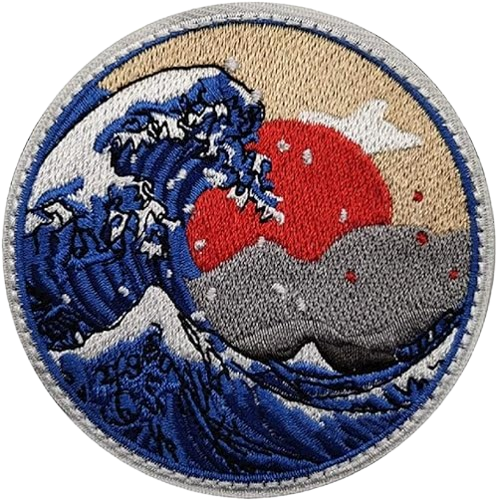
The Great Wave off Kanagawa
the parts of “Thirty-six Views of Mount Fuji” a series of landscape prints by the Japanese Ukiyo-e artist, Hokusai Katsushika (1760-1849).
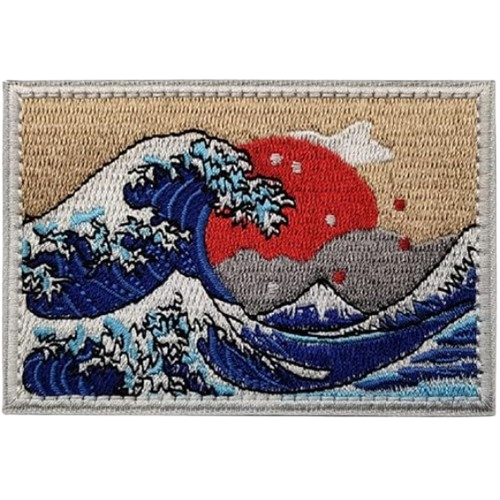
The Great Wave off Kanagawa
the parts of “Thirty-six Views of Mount Fuji” a series of landscape prints by the Japanese Ukiyo-e artist, Hokusai Katsushika (1760-1849).
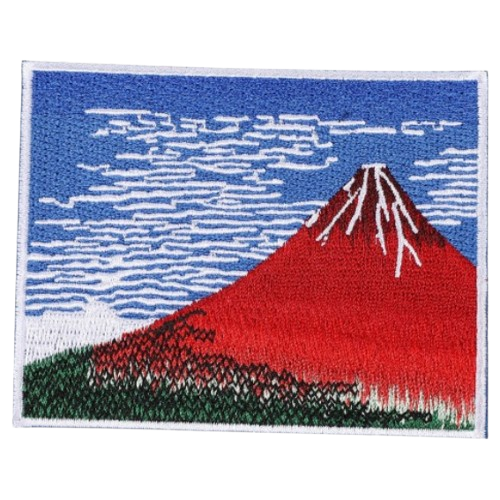
Red Fuji (Fine Wind, Clear Morning)
the parts of “Thirty-six Views of Mount Fuji” a series of landscape prints by the Japanese Ukiyo-e artist, Hokusai Katsushika (1760-1849).
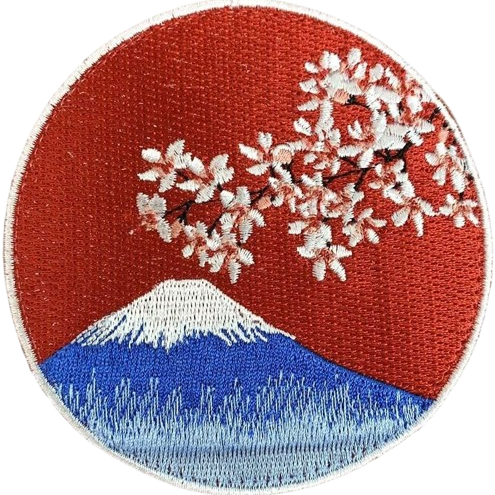
Mt Fuji
– behind the Sakura, the cherry blossom tree.

Mt Fuji
– on the first sunrise of the year, with cranes and a haw

View of Mount Fuji from Satta Point in the Suruga Bay
One of the Thirty-six Views of Mount Fuji by another Japanese ukiyo-e artist Hiroshige Utagawa, depicting Mt.Fuji in differing seasons and weather conditions from a variety of different places and distances.
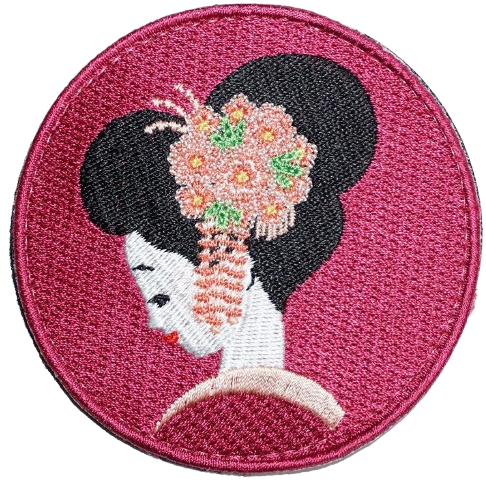
Geisha
are female Japanese performing artists and entertainers trained in traditional Japanese performing artsstyles, such as dance, music and singing, as well as being proficient conversationalists and hosts. Their distinct appearance is characterised by long, trailing kimono, traditional hairstyles and oshiroi make-up. Geisha entertain at parties known as ozashiki, often for the entertainment of wealthy clientele, as well as performing on stage and at festivals.
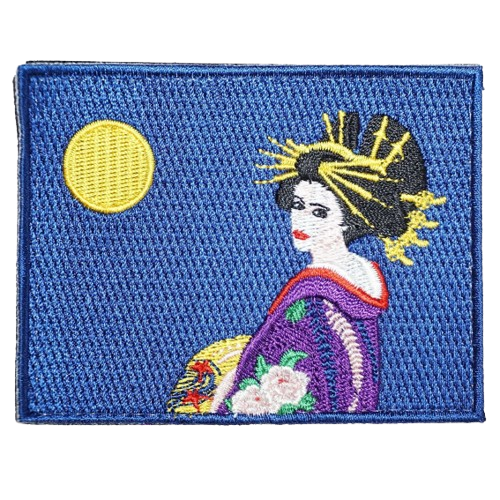
Geisha
are female Japanese performing artists and entertainers trained in traditional Japanese performing artsstyles, such as dance, music and singing, as well as being proficient conversationalists and hosts. Their distinct appearance is characterised by long, trailing kimono, traditional hairstyles and oshiroi make-up. Geisha entertain at parties known as ozashiki, often for the entertainment of wealthy clientele, as well as performing on stage and at festivals.
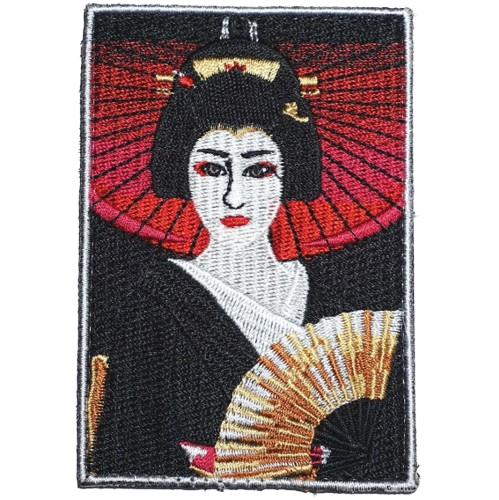
Geisha
are female Japanese performing artists and entertainers trained in traditional Japanese performing artsstyles, such as dance, music and singing, as well as being proficient conversationalists and hosts. Their distinct appearance is characterised by long, trailing kimono, traditional hairstyles and oshiroi make-up. Geisha entertain at parties known as ozashiki, often for the entertainment of wealthy clientele, as well as performing on stage and at festivals.
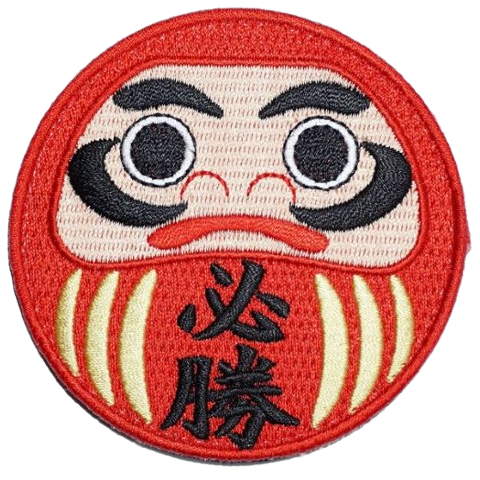
Daruma doll
is a hollow, round, Japanese traditional doll modeled after Bodhidharma, the founder of the Zen tradition of Buddhism. and are seen as a symbol of perseverance and good luck.
必勝/Hisshow :Certain Victory
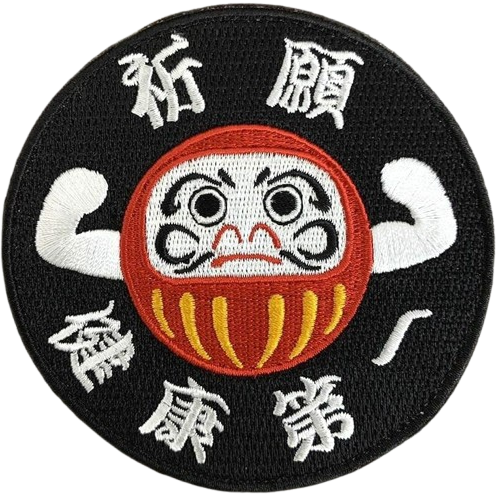
Daruma doll
is a hollow, round, Japanese traditional doll modeled after Bodhidharma, the founder of the Zen tradition of Buddhism. and are seen as a symbol of perseverance and good luck.
祈願/Kigan :Pray
健康第一/Kenko-Daiichi :Prioritise your health
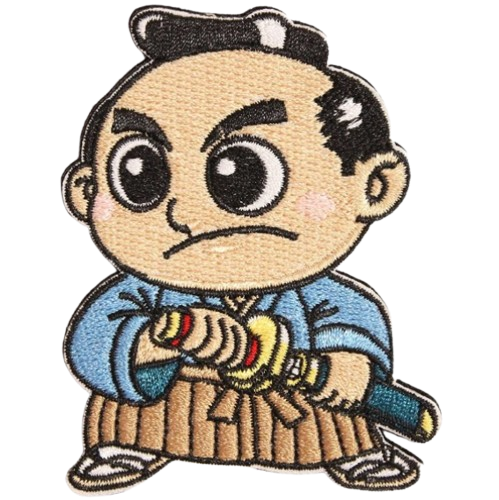
Samurai
were members of the elite warrior class in Japan before the industrial era. In the most common usage of the word, it specifically refers to the warrior retainers of Japan’s lords.
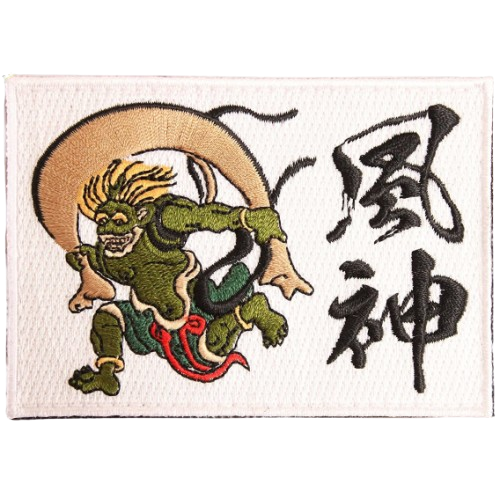
Fujin(風神)
Fujin and Raijin are guardian deities in Japanese Buddhism, and are known as the gods of wind(FUJIN) and thunder(RAIJIN). The wind god carries a wind bag on his back and controls the wind, while the thunder god beats a drum to make thunder reverberate. These gods are considered to be the deification of natural phenomena, and in Japan they are worshipped as beings that bring the blessings of wind and rain.
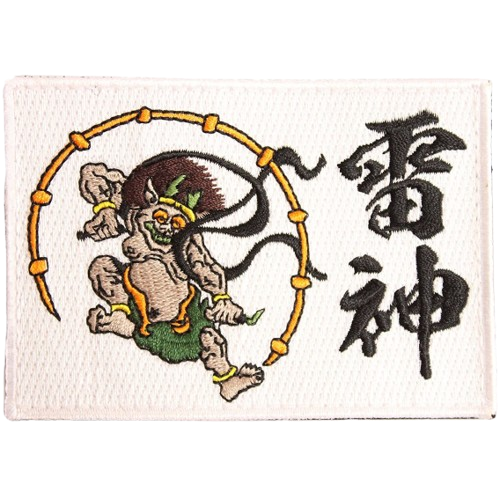
Raijin (雷神)
Fujin and Raijin are guardian deities in Japanese Buddhism, and are known as the gods of wind(FUJIN) and thunder(RAIJIN). The wind god carries a wind bag on his back and controls the wind, while the thunder god beats a drum to make thunder reverberate. These gods are considered to be the deification of natural phenomena, and in Japan they are worshipped as beings that bring the blessings of wind and rain.
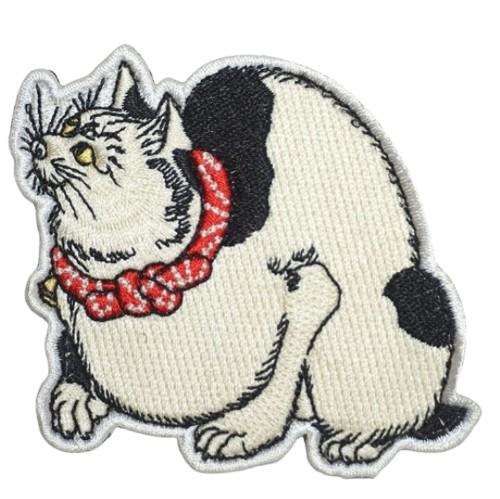
A cat to keep mice away
is one of the Ukiyo-e art by Kuniyoshi Utagawa, drawn about 200 years ago.
The original drawing is with the sentence, “If you hang this picture in your house, the mice will be scared and won’t come out.”
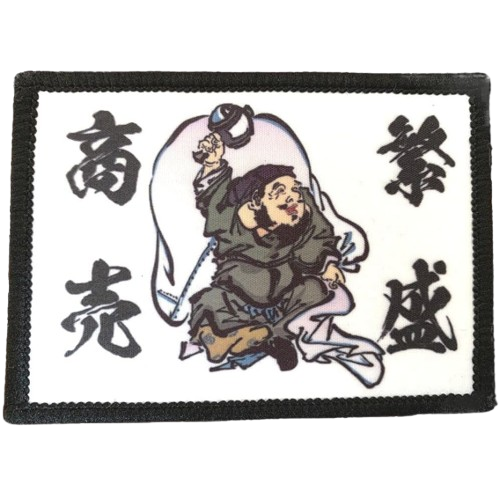
Daikokuten
is a syncretic Japanese deity of fortune and wealth. Daikokuten originated from Mahakala, the Buddhist Deva conflated with the native Shinto god Okuninushi.
商売繁盛:Shobai Hanjo : Business Prosperity
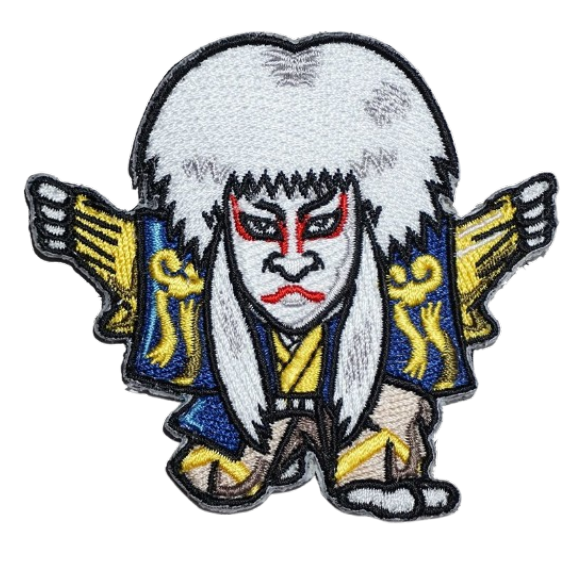
Kabuki Actor
Kabuki is a form of Japanese theater and one of Japan’s traditional performing arts. Its original form dates back to 1603 in Kyoto, and was developed during the Edo period.
It was designated an Important Intangible Cultural Property of Japan on April 20, 1965 (Showa 40).
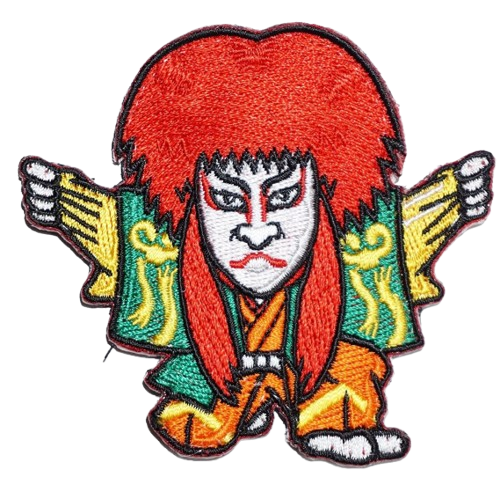
Kabuki Actor
Kabuki is a form of Japanese theater and one of Japan’s traditional performing arts. Its original form dates back to 1603 in Kyoto, and was developed during the Edo period.
It was designated an Important Intangible Cultural Property of Japan on April 20, 1965 (Showa 40).
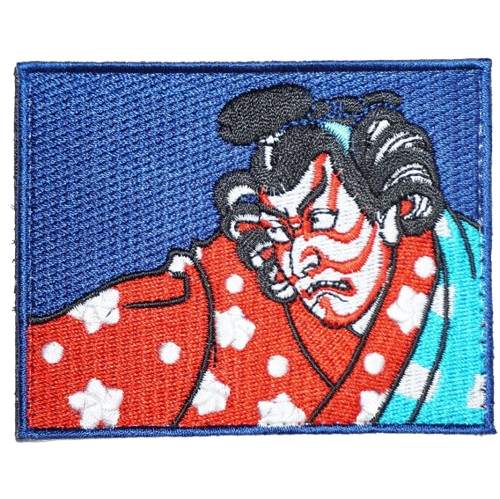
Kabuki Actor
Kabuki is a form of Japanese theater and one of Japan’s traditional performing arts. Its original form dates back to 1603 in Kyoto, and was developed during the Edo period.
It was designated an Important Intangible Cultural Property of Japan on April 20, 1965 (Showa 40).
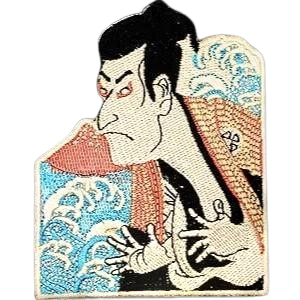
Kabuki Actor ,Red Fuji on the back
Kabuki is a form of Japanese theater and one of Japan’s traditional performing arts. Its original form dates back to 1603 in Kyoto, and was developed during the Edo period.
It was designated an Important Intangible Cultural Property of Japan on April 20, 1965 (Showa 40).
The Red Fuji is a series of landscape prints by the Japanese Ukiyo-e artist, Hokusai Katsushika (1760-1849).
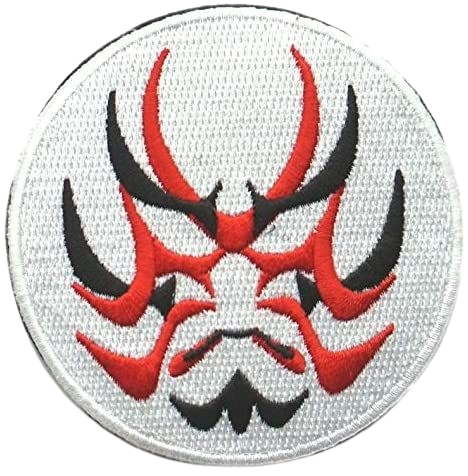
Kumadori
the Kabuki makeup with exaggerated lines and shading.
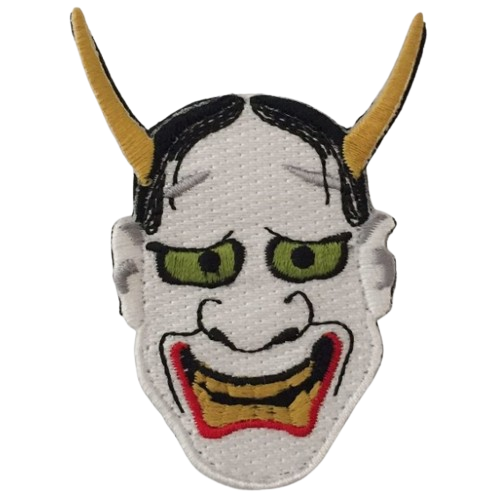
Hannya
is a mask used in a traditional Japanese Noh theater, representing a jealous female demon. It is characterized by two sharp bull-like horns, metallic eyes, and a leering mouth.
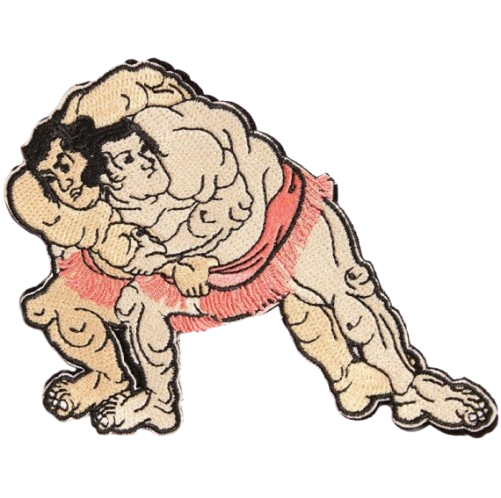
Sumo wrestling
As well known, Sumo is one of the Japanese historical martial arts.
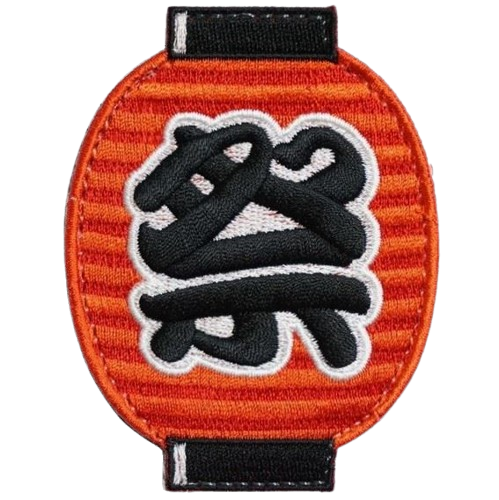
Chochin
the Japanese lantern with “祭 :the Festival” printed on , for use or decoration at various festivals.
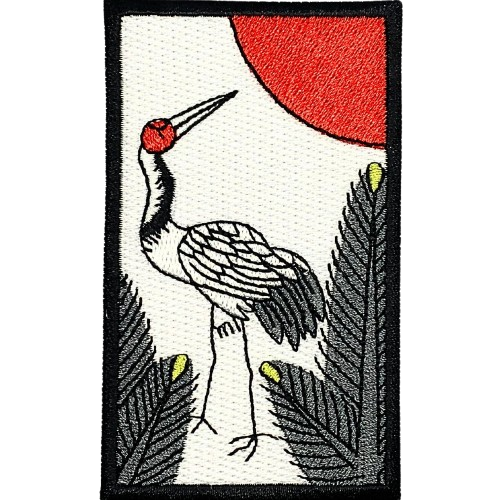
Hanafuda (Japanese flower cards) for January
are a type of Japanese playing cards originated in a Portuguese card game imported in mid-16th century, and became the current form during Edo-period about 300 years ago.
Each card contains specific plant and identify a month of a year and is assigned a specific class.
Crane and Sun with Pine tree for January.
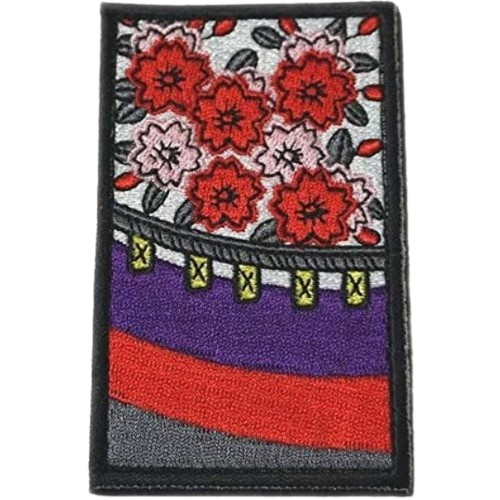
Hanafuda (Japanese flower cards) for March
are a type of Japanese playing cards originated in a Portuguese card game imported in mid-16th century, and became the current form during Edo-period about 300 years ago.
Each card contains specific plant and identify a month of a year and is assigned a specific class.
Cherry blossom and a curtain for March.
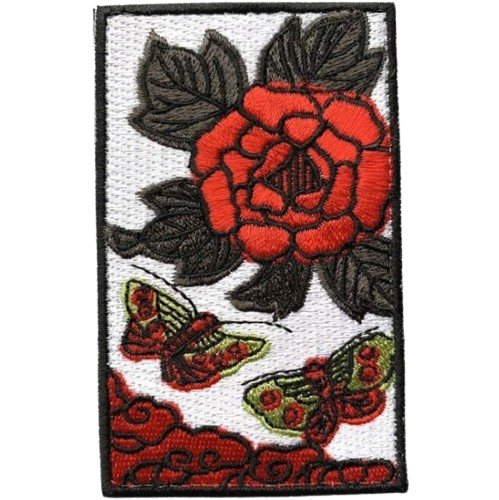
Hanafuda (Japanese flower cards) for June
are a type of Japanese playing cards originated in a Portuguese card game imported in mid-16th century, and became the current form during Edo-period about 300 years ago.
Each card contains specific plant and identify a month of a year and is assigned a specific class.
Butterflies and Peony for June.
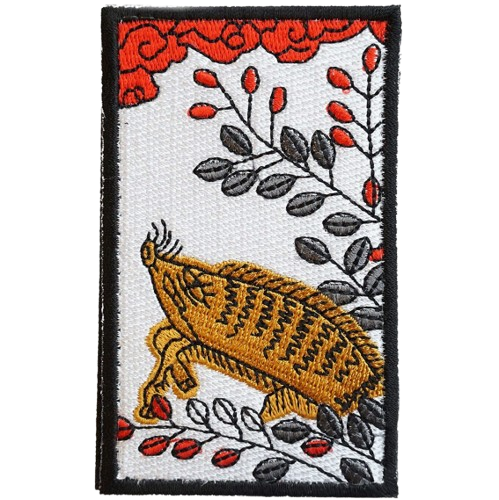
Hanafuda (Japanese flower cards) for July
are a type of Japanese playing cards originated in a Portuguese card game imported in mid-16th century, and became the current form during Edo-period about 300 years ago.
Each card contains specific plant and identify a month of a year and is assigned a specific class.
Boar and Bush clover for July.

Hanafuda (Japanese flower cards) for October
are a type of Japanese playing cards originated in a Portuguese card game imported in mid-16th century, and became the current form during Edo-period about 300 years ago.
Each card contains specific plant and identify a month of a year and is assigned a specific class.
Deer and Maple for October.
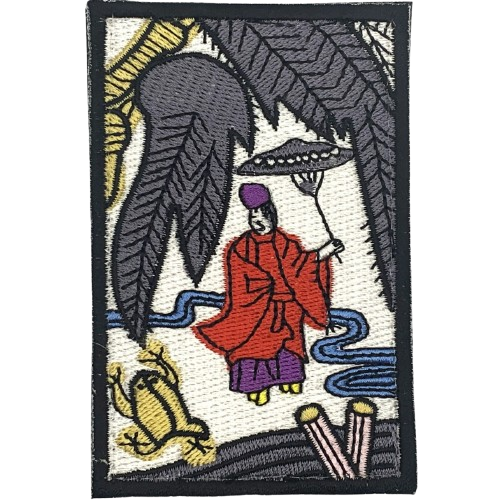
Hanafuda (Japanese flower cards) for November
are a type of Japanese playing cards originated in a Portuguese card game imported in mid-16th century, and became the current form during Edo-period about 300 years ago.
Each card contains specific plant and identify a month of a year and is assigned a specific class.
Willow and a Rain man for November.
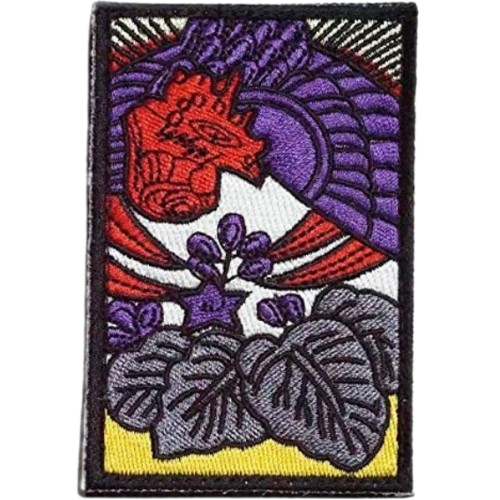
Hanafuda (Japanese flower cards) for December
are a type of Japanese playing cards originated in a Portuguese card game imported in mid-16th century, and became the current form during Edo-period about 300 years ago.
Each card contains specific plant and identify a month of a year and is assigned a specific class.
Chinese Pheonix and Empress tree for December.
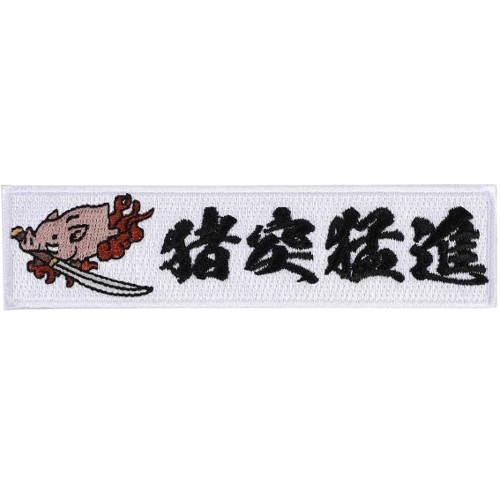
Chototsu-Moshin(猪突猛進)
means “rush recklessly” like a wild boar moving forward with all its might. “猪” is a boar.
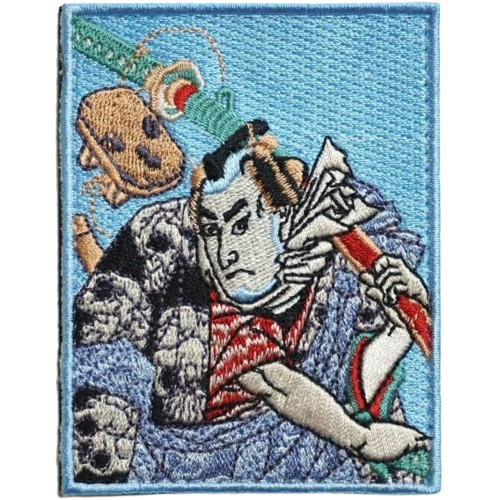
Kuniyoshi Utagawa’s Depiction of a Man of Money, Nozarae (Skeleton) Gosuke
This Utagawa Kuniyoshi print, titled ‘Kuniyoshi’s Depiction of a Man of Money, Nozarae (Skeleton) Gosuke’, portrays a character from Kabuki and Jōruri known for his bravery and daring spirit. The title includes the phrase ‘shofuda-tsuki,’ meaning ‘with a price tag,’ implying the man is genuine and honest. Kuniyoshi, a master of depicting both heroic warriors and humorous scenes, brings his characteristic dynamic style to this depiction of Nozarae Gosuke.
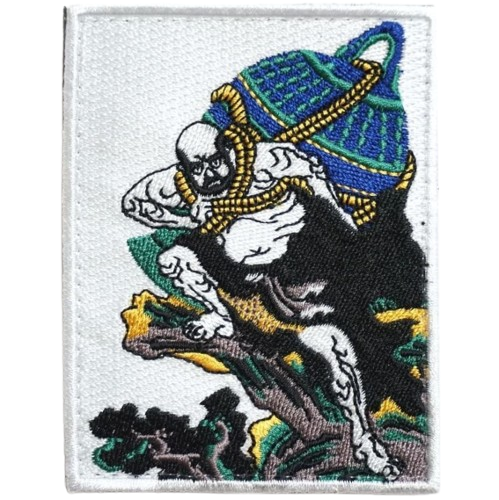
Benkei Performing Noh with His Face Shadows
an ukiyo-e print based on the Musashibo Benkei drawn by Utagawa Kuniyoshi. This work depicts Benkei performing as a taikomochi (a man of the sect) at a samurai banquet.
Benkei (Musashibo Benkei) led a varied life, first becoming a monk, then a mountain ascetic, and then a rogue warrior.
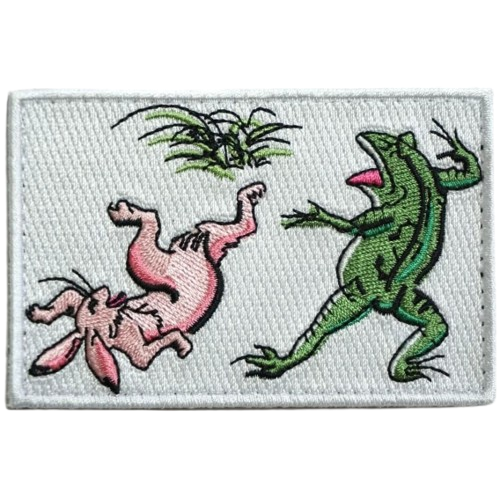
Chōjū-jinbutsu-giga (literally “Animal-person Caricatures”)
commonly shortened to Chōjū-giga (literally “Animal Caricatures”), is a famous set of four picture scrolls, or emakimono, belonging to Kozan-ji temple in Kyoto Japan.
It is sometimes called “the oldest Manga in the history”.
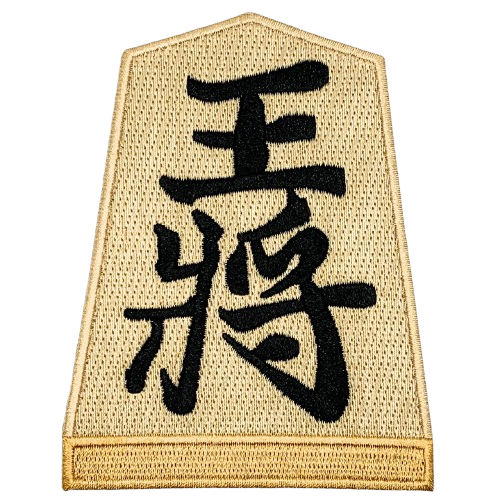
Ohshou (the KING)
The King of the Shogi, the strategy board-game known as Japanese chess.
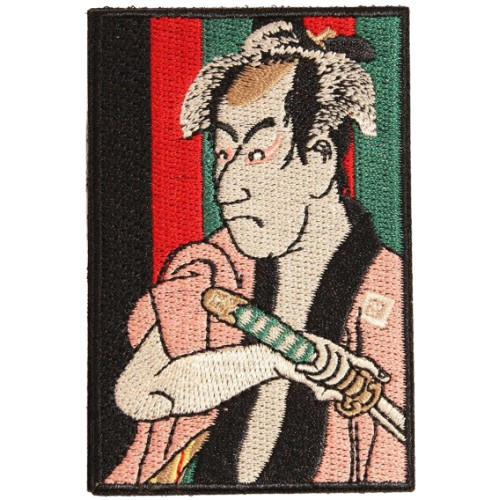
Yacco Ippei ,acted by Omezo Ichikawa
Toshusai Sharaku was a Japanese ukiyo-e artist from the late 18th century, famous for his actor portraits. Omezo Ichikawa was one of the actors he depicted, playing the role of Yacco Ippei. Sharaku’s depiction of Omezo Ichikawa as Yacco Ippei was known for its powerful and realistic style and it gained popularity.
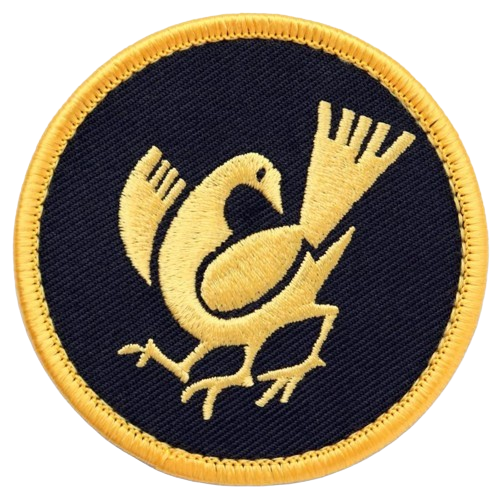
Yata-Garasu :The Yata Crow
is a mythical crow and guidinggod in Shinto mythology, generally known for its three-legged figure. The word means “eight-span crow” and the appearance of the great bird is construed as evidence of the will of Heaven or divine intervention in human affairs.
Yatagarasu as a crow-god is a symbol specifically of guidance.
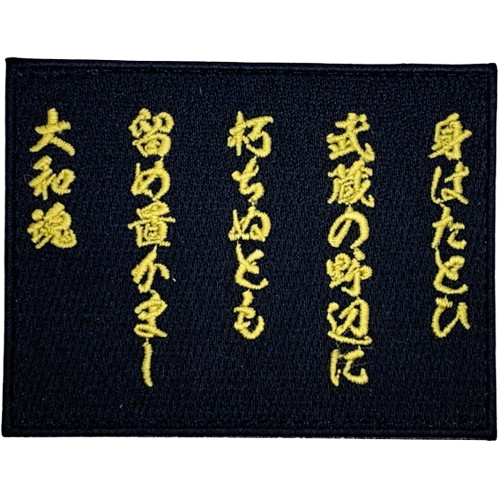
Even if my body decays in the land of Musashino, I want to preserve the Japanese spirit of love for my country forever.
The deth poem by Shoin Yoshida, a Japanese warrior (a master of Yamaga-ryū military science), thinker, and educator in the late Edo period. He was also a spiritual leader and theorist of the Meiji Restoration.
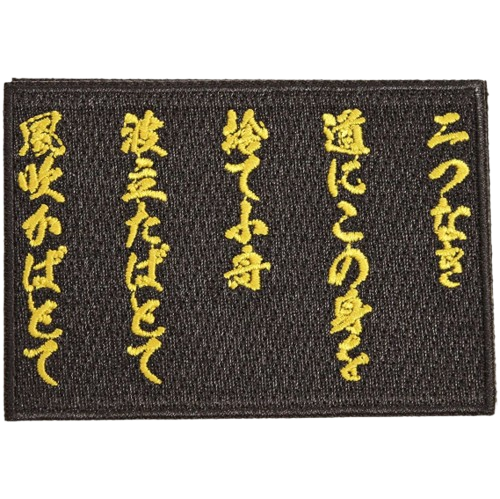
This is a precious and one-of-a-kind life, but I must sacrifice myself for my country and, no matter how rough the waves or how hard the wind blows, I must press on in this abandoned boat with no one to occupy it.
The deth poem by Takamori Saigo, a Japanese samurai and politician who was one of the most influential figures in Japanese history. He played a key role in the Meiji Restoration, which overthrew the Tokugawa shogunate in 1868, and subsequently served in the new Meiji government.
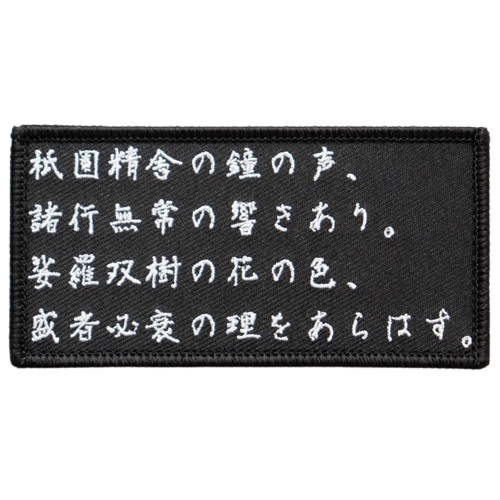
The sound of the Gion Shōja bells echoes the impermanence of all things; the color of the sāla flowers reveals the truth that the prosperous must decline.
The proud do not endure, they are like a dream on a spring night; the mighty fall at last, they are as dust before the wind.
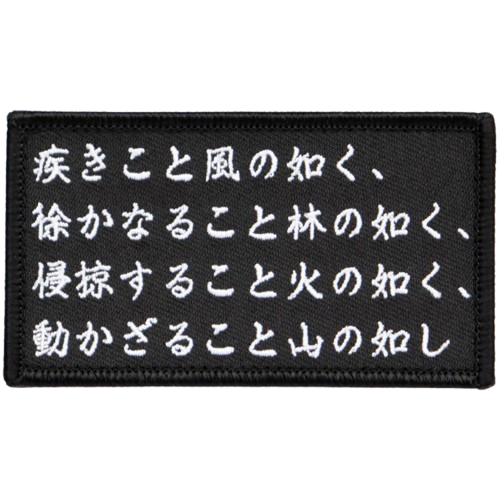
As fast as the wind, as quiet as the forest, as daring as fire, and immovable as the mountain
the slogan of Shingen Takeda,a military commander in the civil war period about 400years ago.
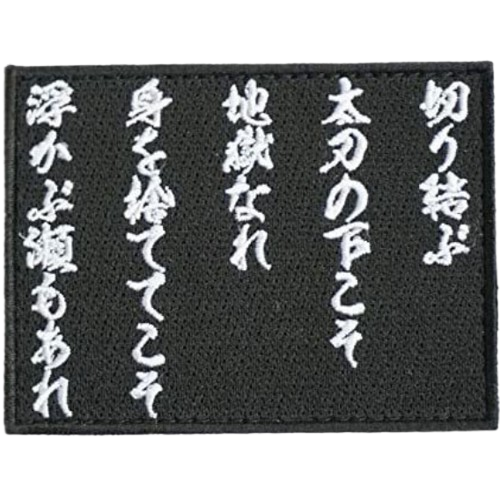
Even if your opponent gets ahead of you, you can’t just accept it and leave it at that. You have to take the initiative and take the lead yourself.
One of the oldest military tactics.
Some argue it is mentioned by Musashi Miyamoto (1584-1645), was a Japanese swordman, strategist, artist, and writer who became renowned through stories of his unique double-bladed swordsmanship and undefeated record in his 62 duels.
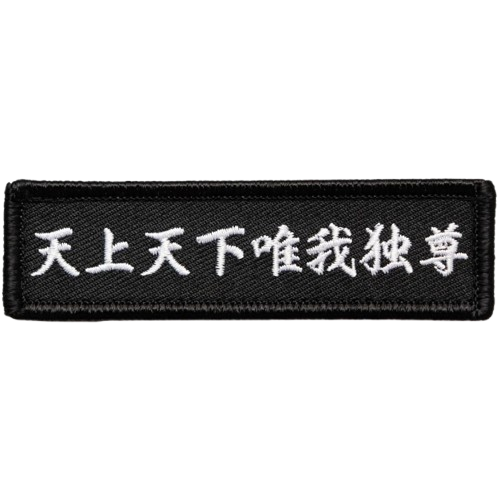
Above earth, under heaven, only I am worthy of honor.
one of the Buddhism phrases.
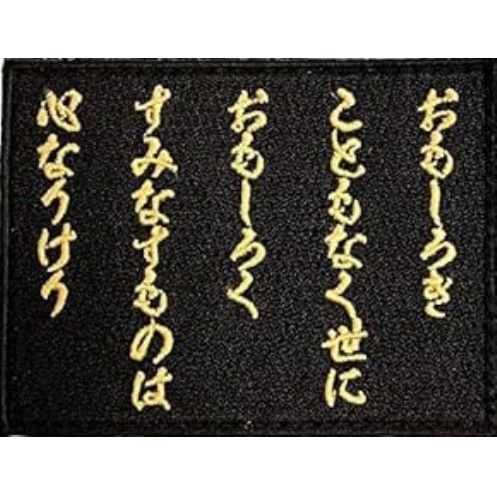
It is your mindset which makes an uninteresting world interesting.
The death poem by Shinsaku Takasugi, a samurai from the Choshu Dmain of Japan who contributed significantly to the Meiji Restoration. He used several aliases to hide his activities from the Tokugawa Shogunate.
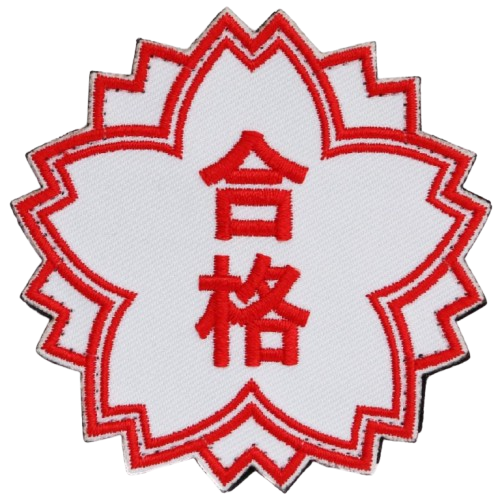
合格/Gokaku :Passed/Accecpted/Certified
Typical stamp given to the person who passed the exam for a school. Also widely used as the symbol for showing the acceptance or the certification. The shape represents the cherry blossom because generally exam results are announced in the spring, the cherry blossom season. “Passing” is metaphorically likened to “cherry blossoms blooming.”
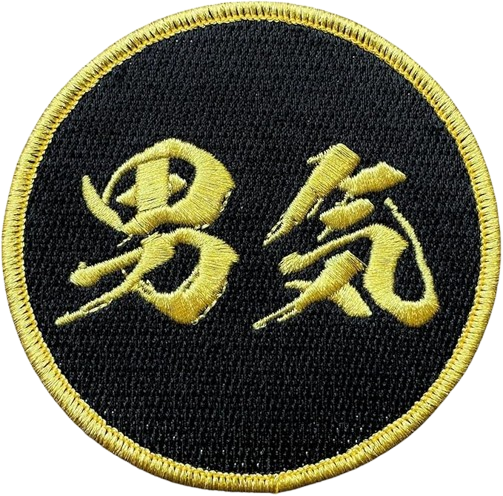
男気/Otokogi :Chivalrous Spirit

